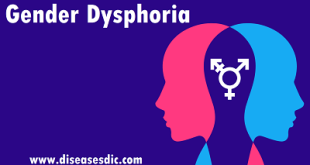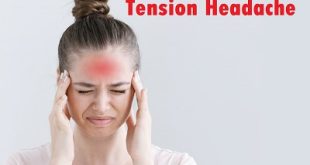What is toxic stress?
Toxic stress refers to prolonged, traumatic life events that occur for an extended period of time in the child’s life without the protection of an adult. Examples can include abuse (physical, sexual, emotional), neglect (physical, emotional) and household dysfunction (parental mental illness, domestic violence, parental incarceration). In response to this prolonged exposure to toxic events, the child’s body produces a severe stress response that lasts for an extended period of time.
Causes and Triggers of Toxic Stress
Toxic stress typically occurs in response to ongoing stressors or prolonged exposure to adversity. Sometimes the cause of the it is a specific traumatic event. Some examples of adverse experiences that can lead to toxic stress include:
- Job loss or change in employment status
- Bankruptcy or an unexpected expense/change in financial status
- Being diagnosed with a chronic or terminal illness
- The death of a parent, spouse, or other loved one
- An accident that leads to a serious injury
- Divorce or separation from a significant other
- The ending of an important relationship
- Physical or sexual assault
- Being the victim of a crime
- A traumatic event that affects a family member or loved one
- Natural disasters
- Emotional, physical or sexual abuse
Because toxic stress is chronic in nature, the causes and triggers of it are usually stressful circumstances and multiple stress factors that persist over a long period of time. Some of the ongoing stressors and triggers that can contribute to toxic stress include:
- Racial or cultural prejudice and oppression
- Poverty and ongoing financial instability
- Chronic unemployment or underemployment
- Workplace problems and job stress
- Chronic physical and mental health issues
- Family conflict and discord
- Lack of safe, adequate housing
- High exposure to crime
- Being bullied (kids/teens) or harassed
- Having a physical or developmental disability
Risk factors of toxic stress
Certain internal and external factors can make it more or less likely that a person will experience toxic stress. Factors that make it more likely that a person will experience it are called risk factors. Some risk factors are internal and include things like genetics, having an existing physical or mental health condition and a person’s mindset.
- Emotional and physical neglect as a child
- Physical, sexual or emotional trauma
- Separation or loss of a relationship
- Unemployment or underemployment
- Unhealthy lifestyle choices
- Existing physical or mental health condition
- Socially or economically disadvantaged
- Few social supports
- Pessimism, self-blame, poor coping skills
- Living in a high crime neighborhood
- Poor or limited access to healthcare
- Single parent household
Signs of Toxic Stress
Toxic stress leads to heightened cortisol levels which can impact one’s ability to manage their mental health and emotional regulation healthily. Learning to identify how it can affect one’s physicality, behaviors, and emotions is the first step to reducing its health risks.
There are common symptoms, including but not limited to:
- Headache
- Muscle tension
- Fatigue
- Upset stomach
- Sleep disturbances
- Restlessness
- Lack of motivation
- Chronic pain
- Feelings of overwhelm
- Irritability or anger
- Anxiety, sadness, or depression
- Substance abuse
- Social withdrawal
What are the consequences of toxic stress (complications)?
- The result of this extended stress response is that a child’s nervous system, immune system and even DNA are changed.
- Toxic stress causes the fear centers of the brain (limbic system, amygdala) to significantly increase in size, and the child can develop symptoms very similar to post-traumatic stress disorder (PTSD).
- Toxic stress decreases the size and impairs the functioning of the regions of the brain responsible for learning, memory, executive functioning (prefrontal cortex, hippocampus). As a result, the child is placed at risk for having learning and behavior problems.
- The child’s immune system is suppressed and puts the child at risk for developing a variety of chronic, lifelong health conditions including asthma, heart disease, stroke, autoimmune disease and cancer.
- The DNA is changed in such a way that the child’s gene expression affects bodily functions and can potentially be passed on to the next generation.
Diagnosing or identifying toxic stress
It isn’t always easy to recognize toxic stress. Because it is pervasive and long-lasting, people often grow so accustomed to it that it begins to feel normal. Some signs to look for when identifying it:
- Are you often moody or irritated?
- Does it feel like you are always worrying about something?
- Does it seem like you don’t have time to take care of yourself or do the things that you enjoy?
- Do the smallest inconveniences seem like too much to handle?
- Do you always seem to catch colds or get infections?
- Have you been relying on unhealthy coping mechanisms like alcohol to manage your stress?
Treatment of Toxic Stress
Toxic stress is a treatable condition, but the treatment is highly individualized to each person and depends on the causes of the stress and the specific ways it is manifesting. Some people who have it need physical and mental health treatment to control their symptoms, and many also need to access resources that can help to address the source of it in their lives.
Mental Health Counseling
Mental health counseling can be helpful for people who are experiencing signs of toxic stress. This treatment usually involves weekly group, family or individual therapy sessions with a licensed counselor. Counseling can help people struggling with toxic stress better understand and manage their symptoms by using different methods of coping. Counseling can also support problem solving when the causes of toxic stress are external in nature.
Some people may be in need of more intensive or targeted mental health treatments including:
- Inpatient rehab or detox for substance withdrawal and recovery
- Intensive outpatient groups that meet several days a week
- Medication to treat depression, anxiety or other mental health symptoms
- Employee Assistance Programs (EAPs) are employee benefits offered by some companies and normally include a certain number of free counseling sessions and other wellness benefits that target stress reduction
- Couples counseling or family counseling to address specific conflicts or stressors at home
- Specialized therapy with counselor trained in specific issues like grief, chronic pain, or trauma
Physical Health Treatment
In addition to mental health treatment, treatment may be needed. Medical treatment can be provided by a primary care or specialist physician and is appropriate in situations where the toxic stress is causing physical symptoms or worsening an existing health problem.
Treatment may include prescribed medications, recommended lifestyle changes, or diagnostic procedures. Some of the more common reasons a person with toxic stress would seek care include insomnia, problems with appetite or weight, or other physical stress symptoms like migraines or constipation.
Community Resources and Support
Because toxic stress often occurs in reaction to very real external stressors and demands, many people will need to address the sources of it in their lives and current circumstances. Some of the resources that people experiencing it may need to seek out include:
- Parenting resources or childcare
- Vocational education or support
- Affordable housing
- Financial assistance
- Legal aid or representation
- Victim advocacy, support, or crisis centers
- Disaster relief services
- Support groups for issues like divorce, cancer, etc.
Prevention of toxic stress
Toxic stress is a function of the absence of buffers to return the stress response to baseline, and it is important to consider preventive measures that promote positive environmental influences and interactions with supportive caretakers.
- Routine anticipatory guidance, which encourages positive parenting, strengthens support for families, and builds resilience, helps develop the buffers required to handle stress and avoid it.
- Preventive interventions should be focused on only those children at risk of adverse childhood events. Children screened and found to have no risk of it may actually experience a detrimental stress response to an intervention.
- Preventive measures to improve resilience in the child are notable, as is focus on aiding assisting the caretaker.
- Targeting the caretaker’s stressors and improving the caretaker’s capacity to provide safe, stable and nurturing relationships may mitigate any toxic stress response in children
 Diseases Treatments Dictionary This is complete solution to read all diseases treatments Which covers Prevention, Causes, Symptoms, Medical Terms, Drugs, Prescription, Natural Remedies with cures and Treatments. Most of the common diseases were listed in names, split with categories.
Diseases Treatments Dictionary This is complete solution to read all diseases treatments Which covers Prevention, Causes, Symptoms, Medical Terms, Drugs, Prescription, Natural Remedies with cures and Treatments. Most of the common diseases were listed in names, split with categories.







